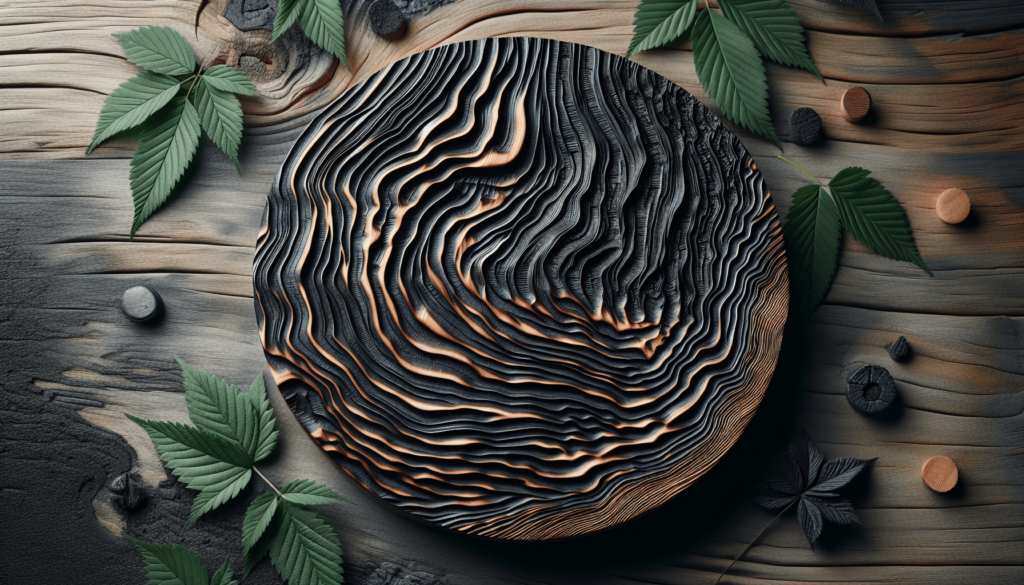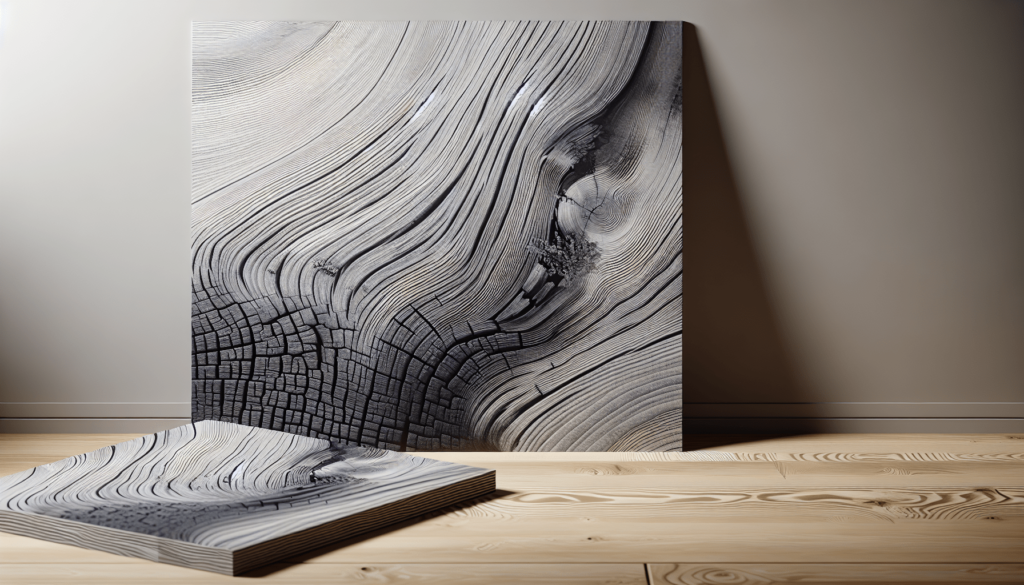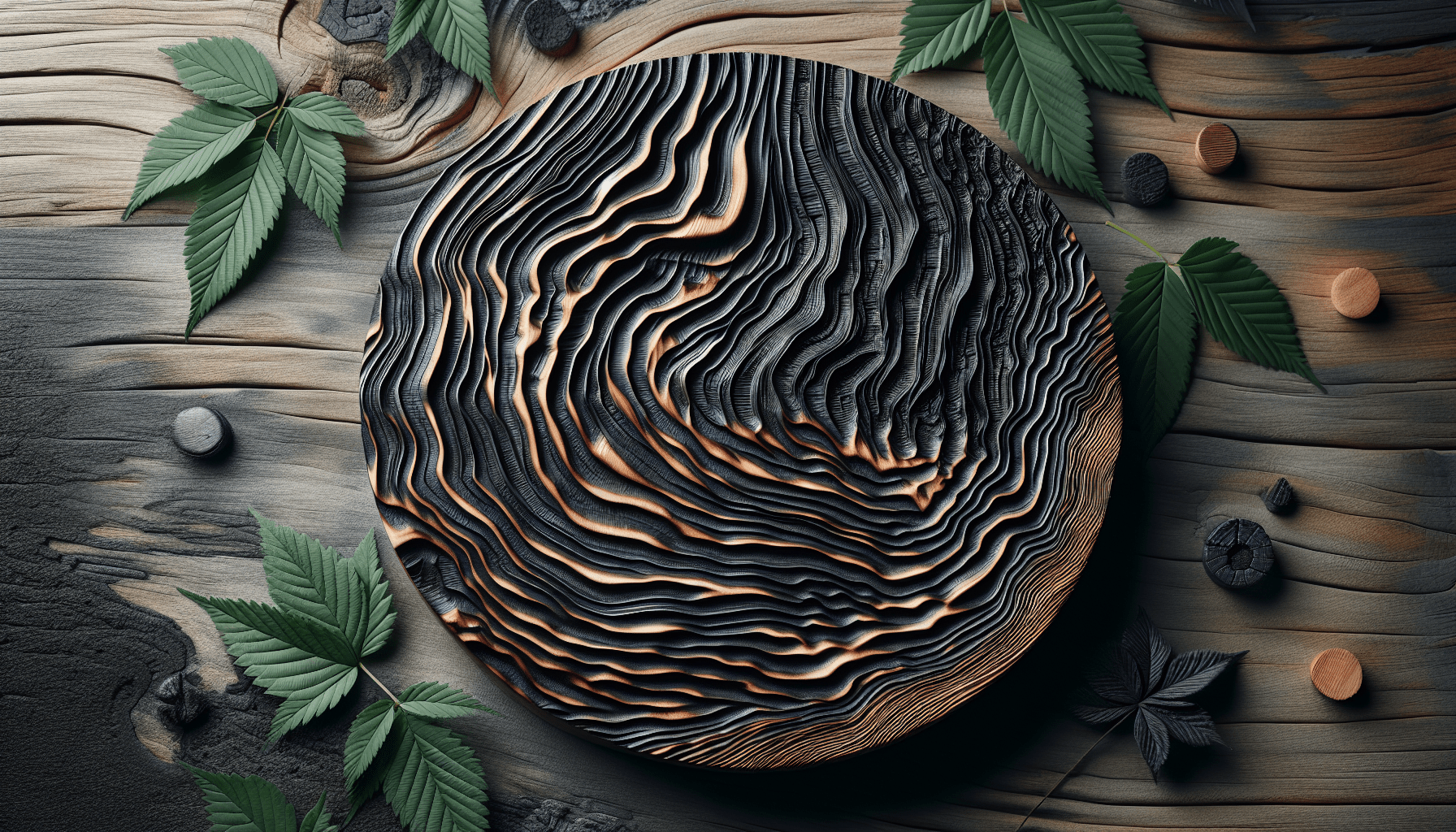When I first ventured into the world of Shou Sugi Ban, the ancient Japanese art of charring wood, I was captivated by the beautiful textures and unique finishes it created. Choosing the right wood is crucial for achieving the best results, and after much research and experimenting, I discovered that certain types of wood, especially those with a high resin content like cedar, pine, and cypress, respond exceptionally well to the charring process. Each type offers its own unique aesthetic and durability, making it essential to understand their distinct characteristics to truly master this art form. What’s the Best Wood for Shou Sugi Ban?
Ever caught yourself daydreaming about a home improvement project that would make your house stand out from the Joneses down the street? I know I have. So, let’s talk about Shou Sugi Ban. You’re probably wondering, “What wood is best for Shou Sugi Ban?” Well, grab a cup of coffee, and let’s dive into this ancient Japanese technique and find out what makes it so compelling and which type of wood will make your project shine, or in this case, smolder.

What is Shou Sugi Ban Anyway?
Okay, let’s start at square one. Shou Sugi Ban, also known as Yakisugi, is a traditional Japanese method of wood preservation. The term ‘Shou Sugi Ban’ translates to “burnt cedar board,” and yep, you guessed it, it involves charring the surface of the wood. It’s not some newfound trend, either. This method has been around for centuries, dating back to the 18th century. Imagine my surprise when I found out that burning wood could actually protect it! It sounds counterintuitive, but hey, that’s the brilliance of ancient wisdom.
How Does Shou Sugi Ban Work?
Here’s a simplified version of the process: You take your piece of wood, char it until it turns black, scrub off the soot, and then coat it in oil. The result? A beautiful, textured finish that’s resistant to rot, insects, and even fire to some extent. Plus, it looks incredibly stylish.
So, let’s talk about the nitty-gritty of selecting the right wood for this technique. Spoiler alert: not all woods are created equal when it comes to Shou Sugi Ban.
Key Factors to Consider
Before we jump headfirst into naming the different types of wood, let’s go over a few key factors you’ll want to think about when choosing wood for Shou Sugi Ban. This will help you make an informed decision rather than just pick a random plank from your local lumber yard.
Wood Grain
The grain of the wood matters because it affects the wood’s appearance post-charring. Woods with a more defined grain tend to look more striking after the Shou Sugi Ban treatment.
Softwood vs. Hardwood
Generally, Shou Sugi Ban works best with softwoods. They char more evenly and are easier to work with. However, that doesn’t mean you should completely rule out hardwoods.
Availability and Cost
Another factor to consider is how easily you can get your hands on the wood and how much it will cost you. Some woods are rarer and more expensive, while others are readily available and easier on the wallet.
Durability
Durability is always a factor in any wood project. You’ll want a wood that will last for years, especially if you’re using it for exterior applications. Remember, Shou Sugi Ban does add durability, but starting with a durable wood doesn’t hurt.
The Top Contenders
Alright, let’s break down the top-performing woods for Shou Sugi Ban.
Cypress
Ah, cypress. This wood is like the goldilocks of Shou Sugi Ban. Not too hard, not too soft, it’s just right. Cypress is native to Japan, so it’s no wonder it’s one of the top choices for this technique.
- Pros: Naturally rot-resistant, beautiful grain, relatively easy to char.
- Cons: Can be pricey in locations where it’s not locally grown.
| Category | Description |
|---|---|
| Durability | High |
| Grain | Pronounced |
| Availability | Moderately available, pricey |
Cedar
Cedar is another classic choice. It’s the wood that often gets mentioned first when people talk about Shou Sugi Ban.
- Pros: Widely available, excellent grain patterns, and it just smells great.
- Cons: A bit softer, can dent if you breathe on it too hard.
| Category | Description |
|---|---|
| Durability | Moderate |
| Grain | Very pronounced |
| Availability | Widely available, moderately priced |
Pine
Pine is like that dependable friend who always shows up when you need them. It’s an excellent choice for newcomers to Shou Sugi Ban because it’s both affordable and easy to work with.
- Pros: Inexpensive, easy to char.
- Cons: Not as durable as some of the other options, can be knotty (and not in the fun way).
| Category | Description |
|---|---|
| Durability | Low to Moderate |
| Grain | Less defined |
| Availability | Widely available, very affordable |
Spruce
Spruce doesn’t get as much love as cedar or cypress, but it’s a solid choice for Shou Sugi Ban, especially if you’re on a budget.
- Pros: Inexpensive, easy to char.
- Cons: Softer, not as durable.
| Category | Description |
|---|---|
| Durability | Low to Moderate |
| Grain | Less defined |
| Availability | Widely available, very affordable |
Oak
Oak is the curveball here. While it’s a hardwood, it can still be used for Shou Sugi Ban to beautiful effect. You just need some elbow grease and a bit more time.
- Pros: Extremely durable, striking grain patterns.
- Cons: Harder to char, moderate to high cost.
| Category | Description |
|---|---|
| Durability | Very high |
| Grain | Pronounced |
| Availability | Moderately available, pricey |
Step-by-Step Guide to Shou Sugi Ban
Now that you’ve picked your wood, let’s get to the fun part: burning stuff! Here’s a simple step-by-step guide to doing Shou Sugi Ban. Word of advice: try not to set your entire backyard on fire. Your neighbors might have some thoughts about that.
Step 1: Safety First
Yes, I know, “safety” is the least exciting part. But seriously, make sure you have a fire extinguisher on hand. And perhaps those trendy safety goggles and gloves that make you look like you’re about to perform a mad scientist experiment.
Step 2: Prepping the Wood
Lay out your wood in a work area that’s safe and well-ventilated. Make sure it’s elevated so that you can get an even burn on all sides.
Step 3: Burning
Here comes the fun part! Using a propane torch, start burning the wood. You want to char the surface until it’s uniformly black. Depending on the look you’re going for, you can go light or heavy on the burn.
Step 4: Brushing
Once the wood has cooled, use a wire brush to scrub off the charred surface until you get the texture and grain appearance you desire. Wear a mask, because charred wood dust is not the seasoning you want.
Step 5: Staining and Sealing
After brushing, you can apply a wood stain if you’re looking for a particular color. Once that’s dry, seal the wood with a natural oil like tung oil or linseed oil to keep it protected and looking fabulous.
Step 6: Install
Your wood is now ready to be used in whatever project you have in mind, whether it’s a deck, a wall, or even some fancy furniture.

Applications for Shou Sugi Ban
Now that you’ve got the basics down, let’s talk about where you can strut your new Shou Sugi Ban creations.
Exterior Cladding
Using Shou Sugi Ban for exterior cladding can make your house the talk of the town—in a good way. It’s incredibly durable and weather-resistant, making it a top choice for exterior finishes.
Fencing
There’s something about a Shou Sugi Ban fence that screams “I have my life together.” Plus, it adds serious curb appeal.
Furniture
Yes, you can even use Shou Sugi Ban for furniture. Imagine having a Shou Sugi Ban coffee table that’s both a conversation piece and an art piece.
Decking
Since Shou Sugi Ban is resistant to rot and insects, it’s ideal for decking material. Just imagine walking out onto your Shou Sugi Ban deck with a cup of coffee in the morning. Paradise.
Art Pieces
Last but not least, don’t forget that Shou Sugi Ban can be used for smaller art projects. From wall hangings to sculptures, the sky’s the limit.
Troubleshooting Common Issues
Every project comes with its own set of headaches, and Shou Sugi Ban is no different. Here are a few common issues and how to troubleshoot them.
Uneven Charring
If you’re noticing uneven charring, it could be due to an inconsistent flame or not keeping the torch moving. Make sure to keep your torch at a consistent distance from the wood and maintain a steady hand.
Wood Cracking
Some woods are more prone to cracking when subjected to extreme heat. To mitigate this, choose wood species less susceptible to cracking and go slow with the burning process.
Inconsistent Coloring
After brushing, you might find the color is not as consistent as you’d hoped. This could be due to how the wood absorbed the flame or how you removed the soot. Patience is key; don’t rush the process.
Oil Finishing Issues
If the oil finish isn’t absorbing well, it might be because the wood wasn’t properly cleaned of soot or dust. Make sure to thoroughly brush and clean your wood before applying oil.
Maintaining Shou Sugi Ban Wood
You’ve put in the hard work, so let’s talk about keeping your Shou Sugi Ban masterpiece in tip-top shape.
Regular Cleaning
A simple wipe-down with a damp cloth usually does the trick for cleaning. Avoid using harsh chemicals that could strip the finish.
Re-Oiling
Depending on exposure to elements, your Shou Sugi Ban wood may need a fresh coat of oil every couple of years. This will keep it looking fresh and protected.
Inspections
Periodic inspections for signs of wear, cracking, or fading can save you a lot of hassle down the line. Catching these issues early will ensure your Shou Sugi Ban wood lasts a lifetime.
Final Thoughts
So, there you have it. The not-so-secret recipe for choosing the best wood for Shou Sugi Ban, along with a primer on how to actually do it. Whether you go for the classic Cypress or the budget-friendly Pine, Shou Sugi Ban can add a touch of ancient wisdom and modern flair to your home projects.
Remember, the process is as much an art as it is a science, so don’t be afraid to experiment a little. Who knows, maybe you’ll start a trend in your neighborhood, and before long, everyone will be asking you for tips on the best wood for Shou Sugi Ban. And when they do, make sure to send them this way!
Cheers to creating something beautiful and durable with a little bit of fire and a lot of heart. Happy burning!

